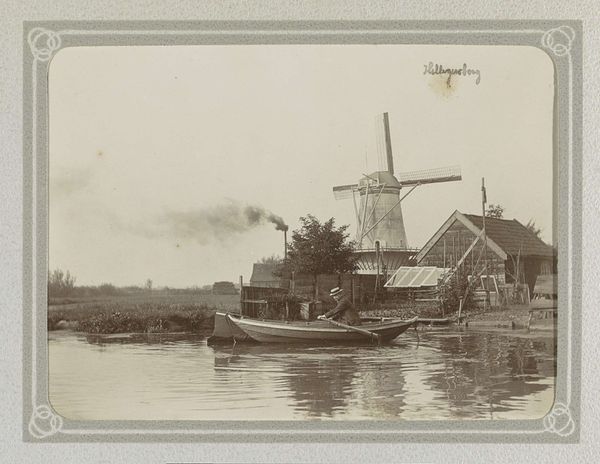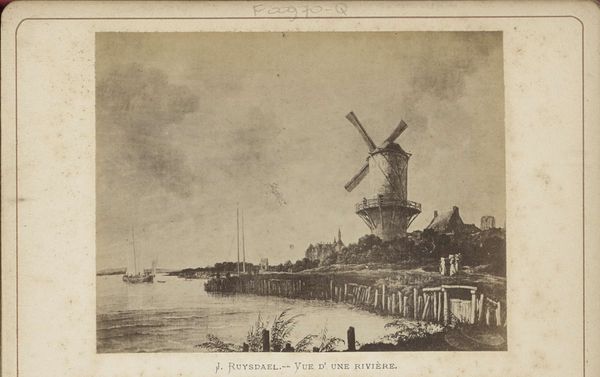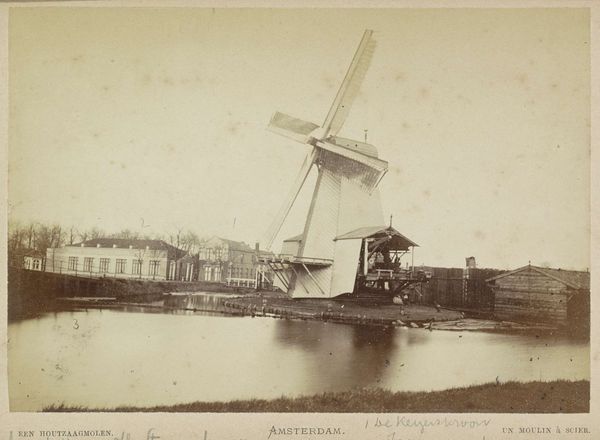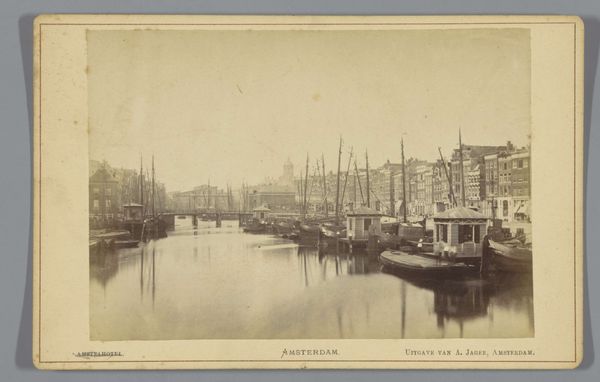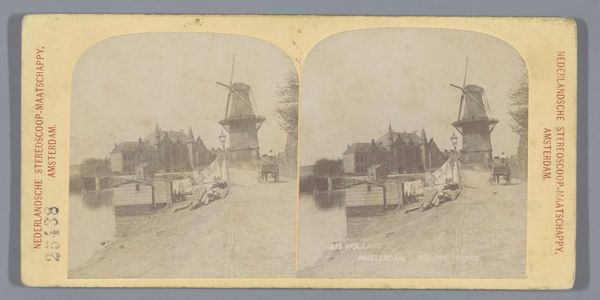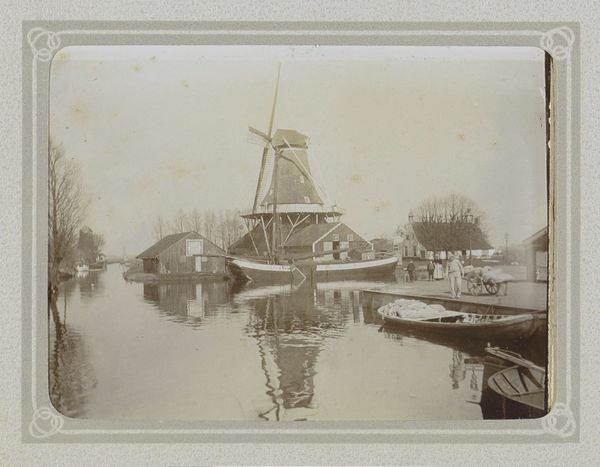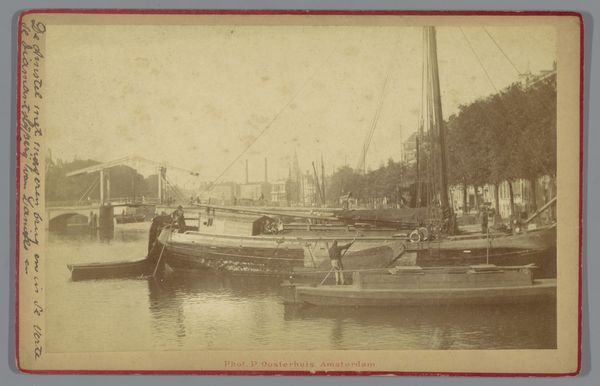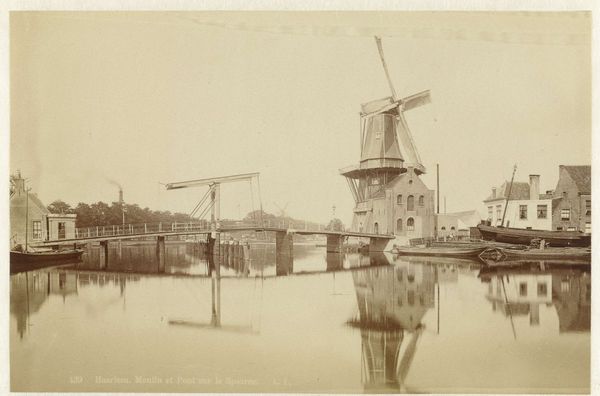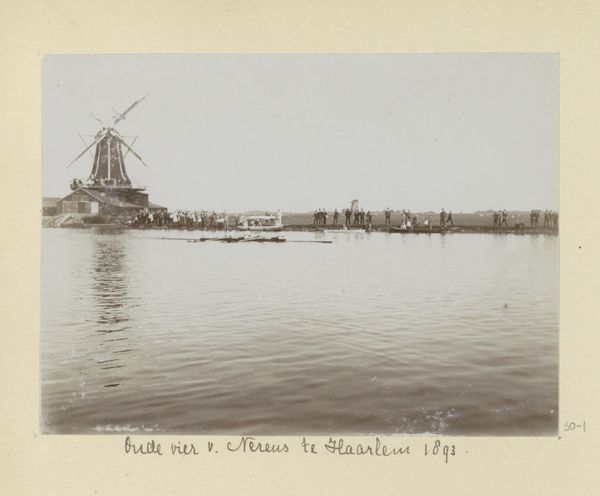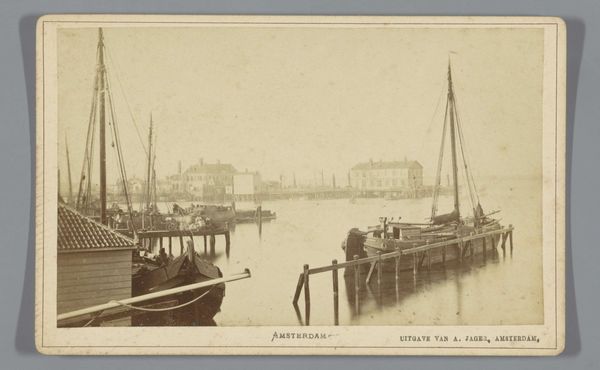
photography, gelatin-silver-print
#
still-life-photography
#
dutch-golden-age
#
landscape
#
photography
#
gelatin-silver-print
#
paper medium
#
realism
Dimensions: height 120 mm, width 183 mm, height 139 mm, width 200 mm
Copyright: Rijks Museum: Open Domain
Curator: Immediately, I'm struck by the composition. The water's surface almost vibrates due to the stark contrasts! Editor: This gelatin silver print, dating from 1864 to 1900, offers us a glimpse of mills lining the canal connecting Leeuwarden to Harlingen. It’s by the photography studio of Léon & Lévy. I see a visual record of infrastructure central to that region’s economy. Curator: Absolutely. Notice how the horizontal canal emphasizes the verticality of the windmills, drawing the eye upward? The limited palette—ranging from sepia to cream—creates an image with visual harmony. It's very much a formal exercise in tonal control. Editor: Indeed. Yet it is not only about the eye's delight. The image reflects the advancements in silver gelatin processes of the era—cheap, readily available paper providing a mode of wider consumption, enabling greater distribution. Who worked on these prints, under what conditions? That labour history matters. Curator: It does, but consider the photographer’s deliberate viewpoint! He creates depth with diminishing forms leading us towards a distant horizon—it echoes Dutch Golden Age landscape painting conventions. The sailboats add depth; their positions strategically positioned... Editor: Strategic positions? Or available water access? The sail-powered boat illustrates modes of production for the time! This vista is carefully designed but born out of industry demands rather than compositional concern alone. What was shipped? Who profited? The image speaks beyond mere composition, providing an insight to 19th Century work ethics. Curator: Okay, but even the textures—from the windmill’s rough surfaces to the water's sleek plane—engage our senses and the image is undeniably restful, isn't it? It’s all about lines, shapes, light... Editor: But understanding paper trade unlocks other narratives beyond the image! How distribution helped form a national visual language across a developing sense of landscape and civic identity is fundamental! Curator: A wonderful insight—the two seem forever interwoven! Editor: And perhaps a wider lens creates the richer artwork interpretation.
Comments
No comments
Be the first to comment and join the conversation on the ultimate creative platform.
